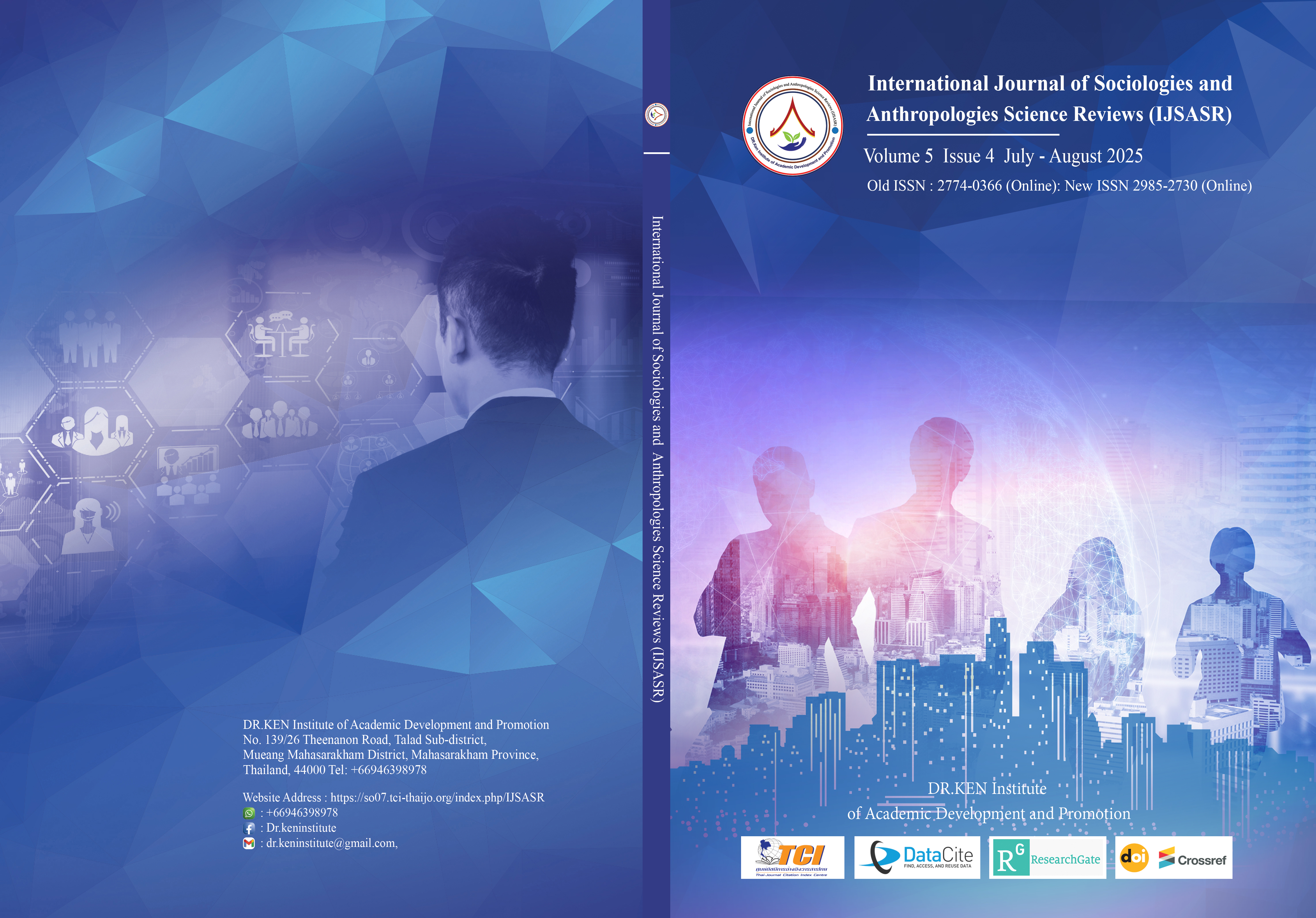Analyze the Guidelines for Writing Research Approach on Graphic Design Methods using Visual Illusion Art
Main Article Content
Abstract
Background and Aim: Visual illusion art offers unique, innovative value in graphic design, enabling designers to break conventional thinking patterns and enhance the expressiveness and appeal of their work. However, there is a lack of systematic and practical guidance for applying visual illusion techniques in design. To address this gap, this study systematically summarizes the application methods of visual illusion in graphic design, culminating in the book Research on Graphic Design Methods Based on Visual Illusion Art. Unlike existing studies focused on theoretical discussions, this book integrates theoretical foundations with methodological frameworks and practical applications, aiming to help designers master visual illusion principles and enhance the innovation, expressiveness, and visual impact of their work.
Materials and Methods: A mixed-methods approach was adopted, combining qualitative methods (literature review, field investigation, case studies, and interviews) with quantitative analysis (surveys and statistical evaluation of the book’s effectiveness). This approach ensures both theoretical depth and practical relevance in exploring the application of visual illusion in graphic design.
Results: Key findings include: (1) Visual illusion-based design methods are classified into five categories: geometric, color, motion, spatial, and multi-meaning figure illusions. (2) Visual illusion art helps designers overcome traditional design limitations, fostering creativity and expressive potential. (3) The book provides designers and students with structured methodologies and creative inspiration, improving their design skills, originality, and visual appeal.
Conclusion: This study enriches design methodologies by proposing a classification system and application methods for visual illusion, offering designers systematic tools to expand their creative thinking and enhance the expressiveness of their work. Additionally, the study contributes to design education by providing new teaching resources that help students gain a deeper understanding of visual illusion techniques, thereby improving their practical and innovative capabilities.
Article Details

This work is licensed under a Creative Commons Attribution-NonCommercial-NoDerivatives 4.0 International License.
Copyright on any article in the International Journal of Sociologies and Anthropologies Science Reviews is retained by the author(s) under the under the Creative Commons Attribution-NonCommercial-NoDerivatives 4.0 International License. Permission to use text, content, images, etc. of publication. Any user to read, download, copy, distribute, print, search, or link to the full texts of articles, crawl them for indexing, pass them as data to software, or use them for any other lawful purpose. But do not use it for commercial use or with the intent to benefit any business.

References
Arnheim, R. (2019). Art and visual perception. Sichuan People's Publishing House.
Cai, P. (2020). One Generates All Things: A Study on Modular Methods and Styles in Graphic Design. Master's thesis, Nanjing University of the Arts.
Creswell, J. (2017). Mixed methods research: Design and implementation. Chongqing University Press.
Elam, K. (2018). Grid Systems: Principles of organizing type. Shanghai People’s Fine Arts Publishing House.
Finke, R. A., Ward, T. B., & Smith, S. M. (1992). Creative Cognition: Theory, Research and Application. Cambridge, MA: MIT Press.
Guilford, J. P. (1967). Creativity: Yesterday, today, and tomorrow. The Journal of Creative Behavior, 1(1), 3–14. https://doi.org/10.1002/j.2162-6057.1967.tb00002.x
Haslam, A. (2020). Book design. Shanghai People's Fine Arts Publishing House.
Ma, J. (2018). Translation and Innovation Design of Ningqiang Qiang Embroidery Patterns. Packaging Engineering, (20), 22-28.
Morlok, F., & Waszelewski, M. (2020). Bookbinding: A Comprehensive Guide to Design and Techniques. Beijing: China Youth Press.
Müller-Brockmann, J. (2022). Grid systems in graphic design. Shanghai People’s Fine Arts Publishing House.
Qi, H. (2016). Principles and methods of graphic design research. China Books Publishing House.
Shanben Publishing Co., Ltd. (2019). Illusions in visual design. Huazhong University of Science and Technology Press.
Tondreau, B. (2012). Layout essentials: 100 design principles for using grids. Guangxi Fine Arts Publishing House.
Wang, J. (2007). Illusion art design. Tongji University Press.
Wang, S. (2018). History of modern graphic design in the world. Beijing: China Youth Press.
Zhi, Y., & Wang, B. (2021). Study on the Graphic Design Method Based on Semiotic Rhetoric. Packaging Engineering, 6, 226-231.






